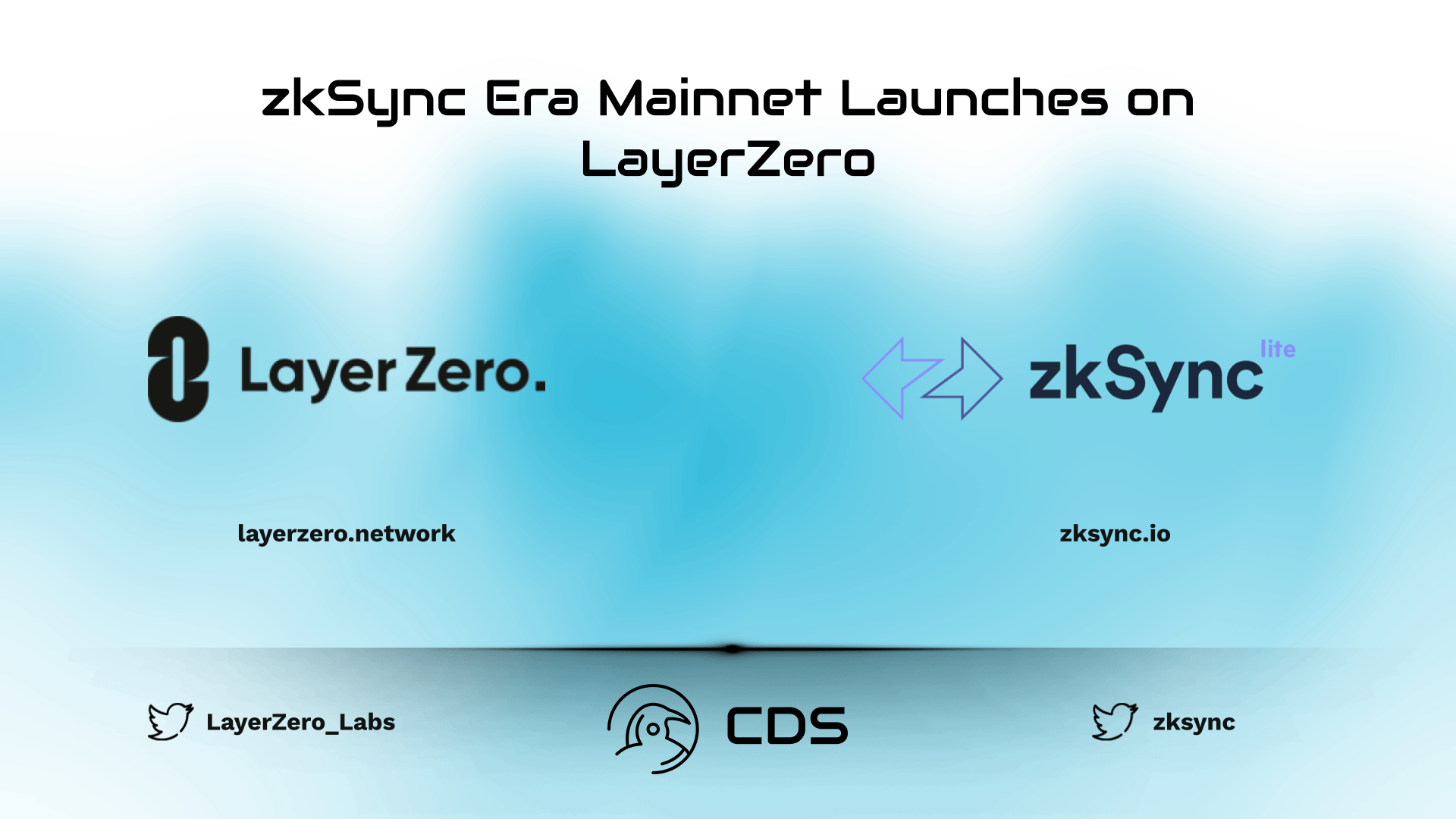On Thursday, LayerZero made live on zkSync Era Mainnet. Largest bug bounty program opts for LayerZero ensuring platform reliability.

zkSync Era Mainnet Launches on LayerZero
LayerZero was launched on zkSync right after the release of zkSync Era Mainnet on March 24th. With this launch, developers can now leverage interoperability to build on zkSync and extend their applications, and also take advantage of the largest bug bounty program. LayerZero supports over 30 chains.
ZkSync Era features the zero-knowledge Ethereum Virtual Machine (zkEVM), which is the second version of the Layer 2 Ethereum scaling network. The zkEVM makes it easier for developers to deploy applications without significant modifications, while also providing permissionless and barrierless performance.
On the other hand, LayerZero is an interoperability protocol that supports over 30 chains, enabling developers to explore zkSync development with a messaging system. It is an omnichain solution that facilitates communication and extends the reach of zkSync development.
LayerZero Expands to zkSync
The launch of LayerZero on zkSync Era Mainnet is anticipated to enhance flexibility and interoperability. This protocol offers adequate authentication and ensures message delivery with a configuration of trust, making it a valuable addition to the blockchain industry.
Furthermore, LayerZero Labs has established the most extensive bug bounty program, offering $15 million for prolonged evaluation to enhance security. To date, LayerZero has paid out almost $1 million for disclosures. In addition, the Aptos Bridge is expected to join with a separate bug bounty of $2 million.
LayerZero has the potential to improve the efficiency of cross-chain communication, enabling the development of complex interconnected applications. Additionally, it provides developers with a reliable and secure platform to build upon.
What is LayerZero?
LayerZero is an interoperability protocol that seamlessly links blockchains using a distinctive communication primitive. In essence, it enables easy communication between all supported blockchains, facilitating functionalities such as swaps, transfers, borrowing, lending, and more across different blockchains.

How Does LayerZero Work?
LayerZero deploys a set of smart contracts on each supported chain, known as LayerZero Endpoints, to link all supported chains. These contracts can be easily deployed on new chains to include them in LayerZero’s network.
For instance, in cross-chain borrowing, a user attempts to borrow USDC on Avalanche using their deposited WBTC balances on Ethereum. The user initiates the transaction on Ethereum, and the transaction details are sent to the LayerZero Endpoint on that chain.
LayerZero operates on the principle that if two independent entities can verify that a transaction on Chain A is valid, then Chain B can trust that the transaction on Chain A is valid and complete the transaction on Chain B. In the above example, Ethereum is Chain A and Avalanche is Chain B. The two independent entities are known as the Oracle and the Relayer, which are both off-chain and independent.
The Endpoint on Ethereum sends the transaction details to both of these entities. The Oracle produces the block header for the transaction based on the received details, while the Relayer generates the proof for the transaction independently. If both the block header and proof agree, it confirms the validity of the transaction. Once confirmed, a message is sent to Avalanche to complete the transaction, and the appropriate amount of USDC is deposited into the user’s wallet, thereby completing the cross-chain borrowing transaction.
However, some DeFi users have criticized the use of the Oracle and Relayer, as there is a risk to the platform’s security if these entities collude to deceive other users.
What is zkSync?
zkSync is a Layer 2 blockchain protocol that utilizes zero-knowledge proofs to address Ethereum’s congestion issues. Matter Labs, the creator of zkSync, aims to promote the widespread adoption of cryptocurrencies for personal sovereignty.

The protocol is designed to fully exploit the potential of trustless blockchain technology while maintaining Ethereum’s core values. It has already facilitated over 14 million high-speed transfers, thanks to initial funding from the Ethereum Foundation.
To access more article: cryptodataspace.com
















Leave a comment